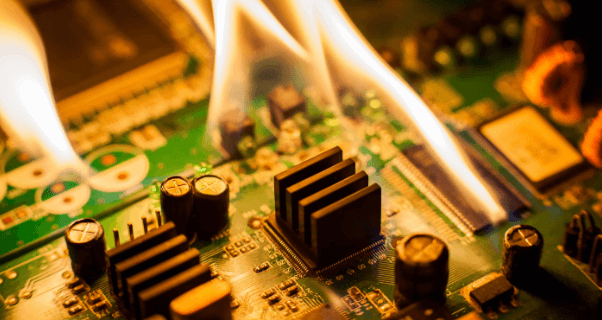
The Importance of Efficient Thermal Management in Electronics
Table of Contents:
- Introduction to Thermal Management
- Understanding Heat Transfer Principles in Electronics
- Advances in Thermal Management Technology
- Passive vs. Active Cooling Solutions
- Designing for Optimal Heat Dissipation
- Common Challenges in Electronic Thermal Management
- Thermal Management in Renewable Energy Systems
- The Role of Fans and Heat Sinks in Electronic Devices
- Case Studies: Effective Thermal Management in Practice
- Final Thoughts on Thermal Management
Key Takeaways:
- Understanding the various modes of heat transport can lead to more effective thermal management systems for electronics.
- New advances in technology continue to enhance the efficiency and capabilities of cooling systems.
- The design and material choice are fundamental in ensuring proper heat dissipation and the reliability of electronic devices.
- Effective thermal management not only extends the life of electronics but also contributes to more sustainable energy consumption.
Introduction to Thermal Management
As the heart of modern electronics beats faster, pushing devices to perform more complex tasks in increasingly slimmer profiles, the heat generated by these feats of engineering could become their undoing. When the temperature rises beyond a device’s operational tolerance, it not only stymies performance but risks causing grave malfunctions or permanent damage. To counteract these overheating concerns, efficient thermal management grows increasingly critical. It is a discipline dedicated to regulating temperature within acceptable bounds, ensuring electronics continue to operate safely and reliably.
Understanding Heat Transfer Principles in Electronics
Grasping how heat moves through an electronic system is vital for implementing effective thermal management strategies. Conduction, the direct transfer of heat via particles in a solid, becomes particularly potent in densely packed circuits. Convection, often aided by fluid motion, carries heat away from its source, while radiation emanates energy in the form of waves or particles. The material choice is integral to managing these heat transfer methods, with some substances designed to draw heat away from sensitive components swiftly and others crafted to insulate and protect.
Advances in Thermal Management Technology
Not so long ago, managing a device’s thermal footprint was a mere afterthought, a problem to be solved once all other design parameters were set. Today, thermal management stands at the forefront of product design, powered by cutting-edge materials like thermally conductive polymers and novel cooling architectures. Thermal interface materials (TIMs), which bridge gaps between heat-generating components and heatsinks, have grown increasingly sophisticated, allowing for more efficient heat transfer efficiency. Furthermore, developments in computational fluid dynamics (CFD) software provide engineers with a potent tool to simulate and optimize thermal behavior before the physical prototype stage.
Passive vs. Active Cooling Solutions
The methods employed to keep electronics excellent are divided into two camps: passive and active cooling. Passive solutions depend on the natural processes of heat dissipation, such as convection and radiation, requiring no additional energy input. These include heat sinks, which draw heat away from a device’s core via a matrix of fins that increase surface area. On the other side, active cooling involves components like fans and liquid cooling systems that draw power from the device but afford a more assertive approach to temperature regulation. A delicate balance between these cooling strategies can often provide the most efficient solution.
Designing for Optimal Heat Dissipation
In designing electronic systems, architects must marry function with form, ensuring not only that the product accomplishes its purpose but also remains thermally stable. This involves a holistic approach from the outset, where the component layout, airflow paths, and material selections all revolve around their thermal implications. Engineers are consistently up against the challenge of making devices smaller, faster, and more robust, all while maintaining or improving their ability to manage heat effectively. This is not merely a question of performance but also one of user safety and product lifespan.
Read also How to Choose the Right Air Motor for Your Machinery: A Comprehensive Guide
Common Challenges in Electronic Thermal Management
Within the confines of slim laptops, smartphones, and other compact devices lies a battleground where intensified heat fluxes must be controlled and dissipated. Diverse environmental conditions compound this challenge—electronics must remain resilient, from the scorching heat of a desert to the sub-zero temperatures of the Arctic. They ensure consistent performance and prevent thermal runaway demand. Design designs that can adapt to varying external and internal temperatures while keeping the heat-generating components in check.
Thermal Management in Renewable Energy Systems
The electronics embedded within renewable energy systems like solar panels and wind turbines must also tackle thermal management hurdles. These systems are often subject to the whims of the environment, and fluctuating temperatures can drastically impact performance and durability. Effective thermal management strategies become essential to maintain the efficiency of these systems and lengthen their service life. It’s a synergy of electronic mastery and ecological consideration where the goals of technological innovation and environmental sustainability intersect.
The Role of Fans and Heat Sinks in Electronic Devices
Fans are the stalwarts of active cooling techniques, with their blades slicing through the air, ushering cooler ambient temperatures to overheated electronic parts. Yet they are not alone in their quest for thermal equilibrium; heat sinks serve as the silent sentinels of passive cooling, their metal forms channeling heat away from crucial circuitry through thermal conduction. Both components are critical in a landscape where electronics demand constant vigilance against the insidious creep of thermal degradation.
Case Studies: Effective Thermal Management in Practice
The proof of any concept is its application, and thermal management has had its fair share of real-world tests. Documented case studies provide a rich tapestry of scenarios where thermal management has either saved the day or, when underprioritized, led to operational disasters. Lessons from these accounts feed into a broader knowledge base, informing best practices and steering the future of electronics cooling.
Final Thoughts on Thermal Management
The thermal footprint of an electronic device is no small matter. It affects not just the present usage of a device but has cascading effects on future design, energy consumption, and even e-waste. As the industry strides towards more powerful, compact, and energy-efficient gadgets, the role of thermal management continues to expand. It is a quest for balance—between power and poise, innovation and sustainability—where each breakthrough in cooling technology represents not just a step forward for electronics but a leap towards a more sustainable future.






